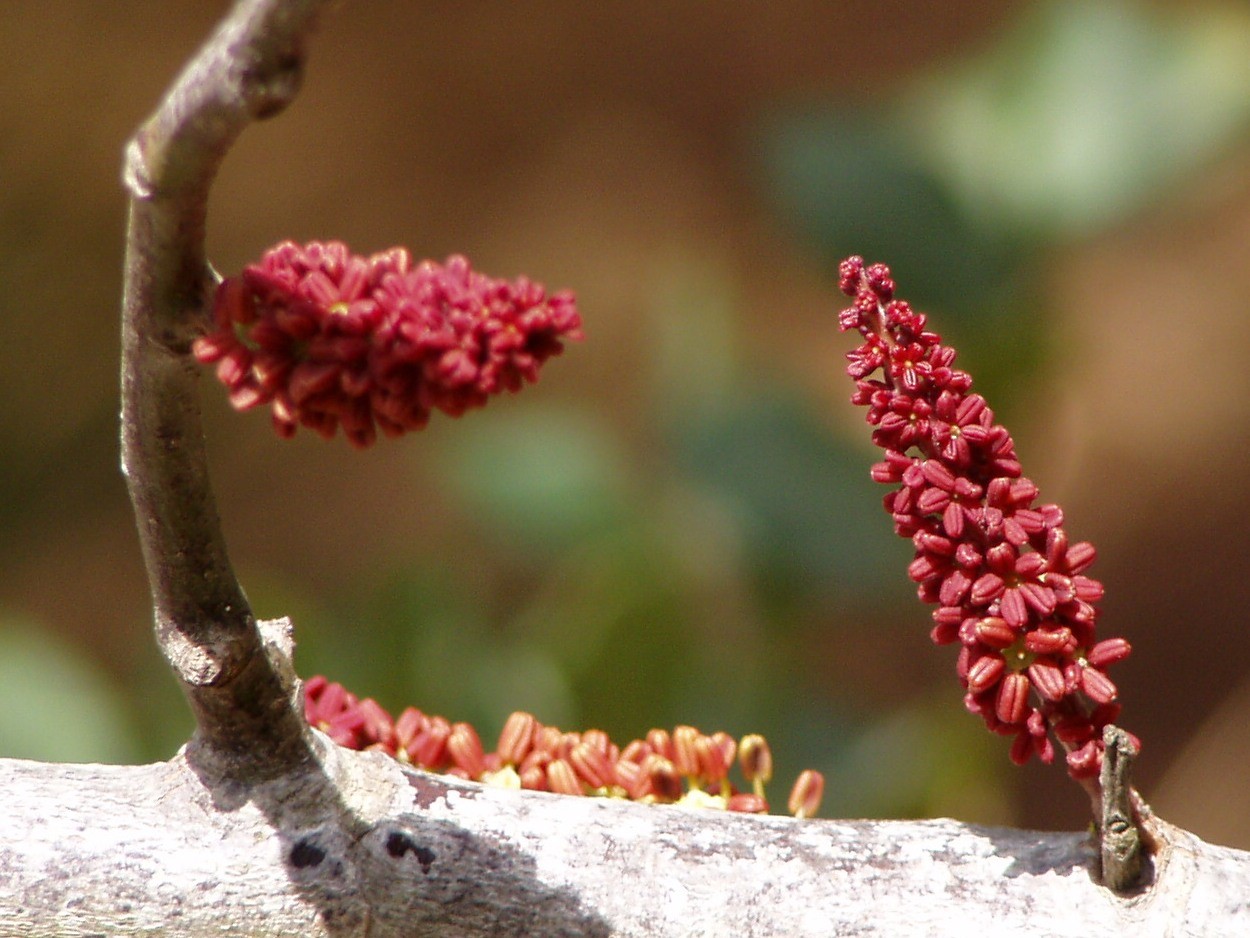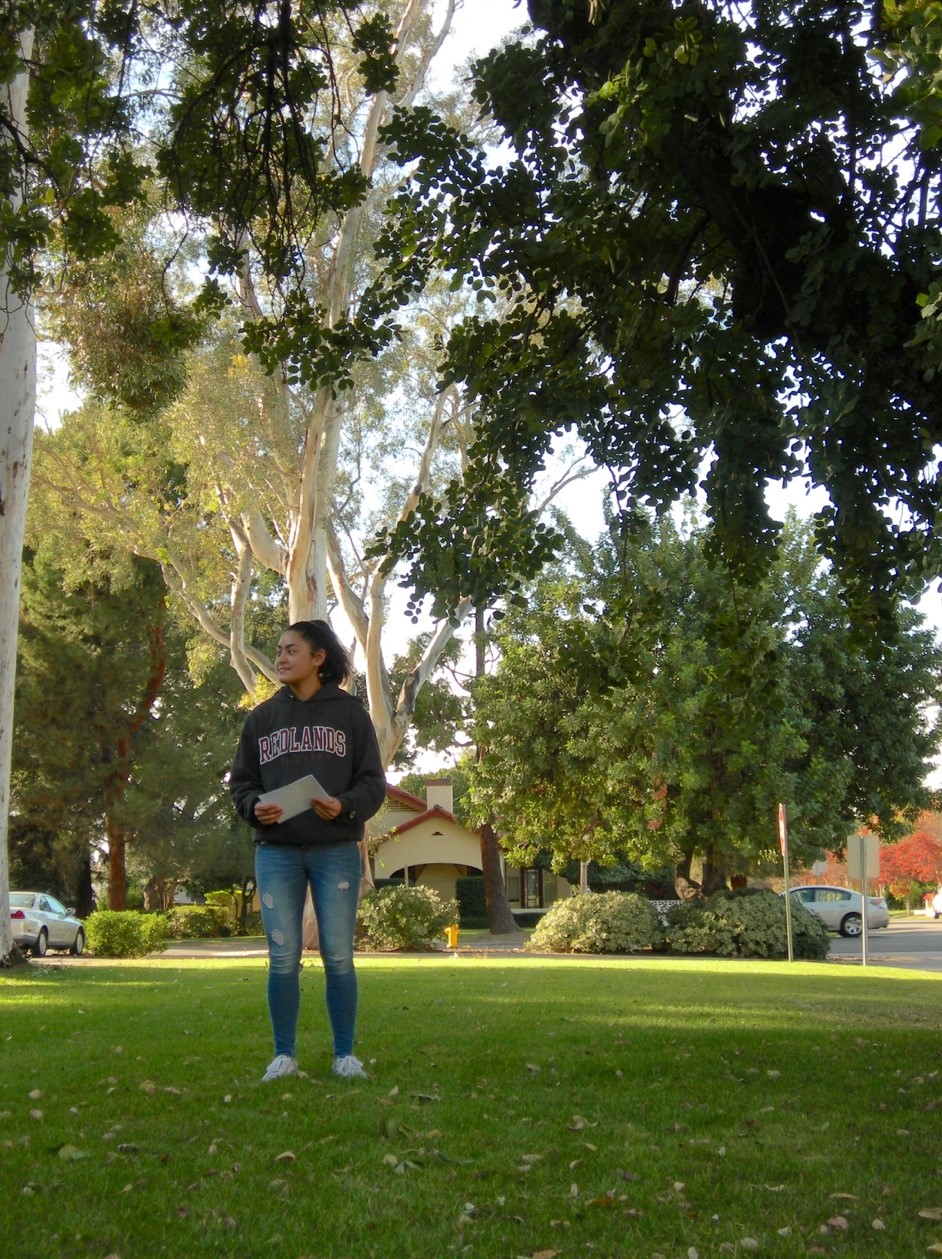University of Redlands Emergency Alert System
Alert Received: . For more information, visit: https://www.redlands.edu/alert/
University of Redlands
- Home
- Trees
- Species Accounts
- Carob Tree
Common Name: Carob Tree
Scientific Name: Ceratonia siliqua
Family: Fabaceae
Identification
Habit: The Carob can grow up to 55 ft (17 m) tall with a 33 in (85 cm) or wider trunk. It has a thick trunk and a broad, low canopy.  Figure 1: Short canopy of a Carob4
Figure 1: Short canopy of a Carob4
Leaves: The leaves resemble a feather and leaflets are arranged on opposite sides of the stalk. There are 5 to 10 pairs of leaflets, oval, rounded at the tip, dark-green, leathery, 1- 2 1/2 in (2.5-6 cm) long.  Figure 2: Leaves on the Carob tree8
Figure 2: Leaves on the Carob tree8
Twigs & Bark: The twigs and branches are sturdy. The bark is rough and reddish-brown. The trunk is sometimes twisted. Figure 3: Trunk of a Carob tree8
Figure 3: Trunk of a Carob tree8
Flowers & Fruits: The flowers on the Carob are different sexes. A tree will either have entirely male flowers or entirely female flowers. The flowers are red with a green tint, small, and arranged in dense clusters. These flowers are produced in autumn and let off a musky smell to attract bees and flies. The fruits are pods that are curved or straight, have a wrinkled surface, and are about 12 in (30 cm) long. The pods are light to dark brown. The texture of the pod is leathery and seeds inside of the pod rattle when it becomes ripe. Inside of the pods it has 90% pulp and 10% seed.  Figure 4: Male flowers on the Carob tree5
Figure 4: Male flowers on the Carob tree5
 Figure 5: Ripe pods on the Carob tree3
Figure 5: Ripe pods on the Carob tree3
Where it’s from
Native Range: Carob is native to the Middle East and warmer parts of the Mediterranean region. Carob grows well in warm temperate and subtropical areas with a Mediterranean climate.
Ecological Notes: It grows in a wide range of climates but needs a hot dry summer, a moderately wet winter, and permanent deep soil moisture to produce good crops of pods (likes fertile, well-drained soil). It can tolerate drought and some salt. The tree doesn’t need a winter chilling; if the temperature goes below 25°F (-4 °C) the tree could be damaged. Carob moth caterpillars can damage the fruit.
What we use it for
Carob pods have a sweet pulp when separated from the hard seed and that pulp is used for making a chocolate substitute in the West. The pulp is also ground down into a flour that is used to make cakes, bread, sweets, and ice cream. The seeds are used for locust bean gum extraction. The tree is a popular ornamental plant in CA and HI.
References
Biographer: Miya Ishii-Bleeker ’21, FYS 20: Plants in Our World, Fall 2017